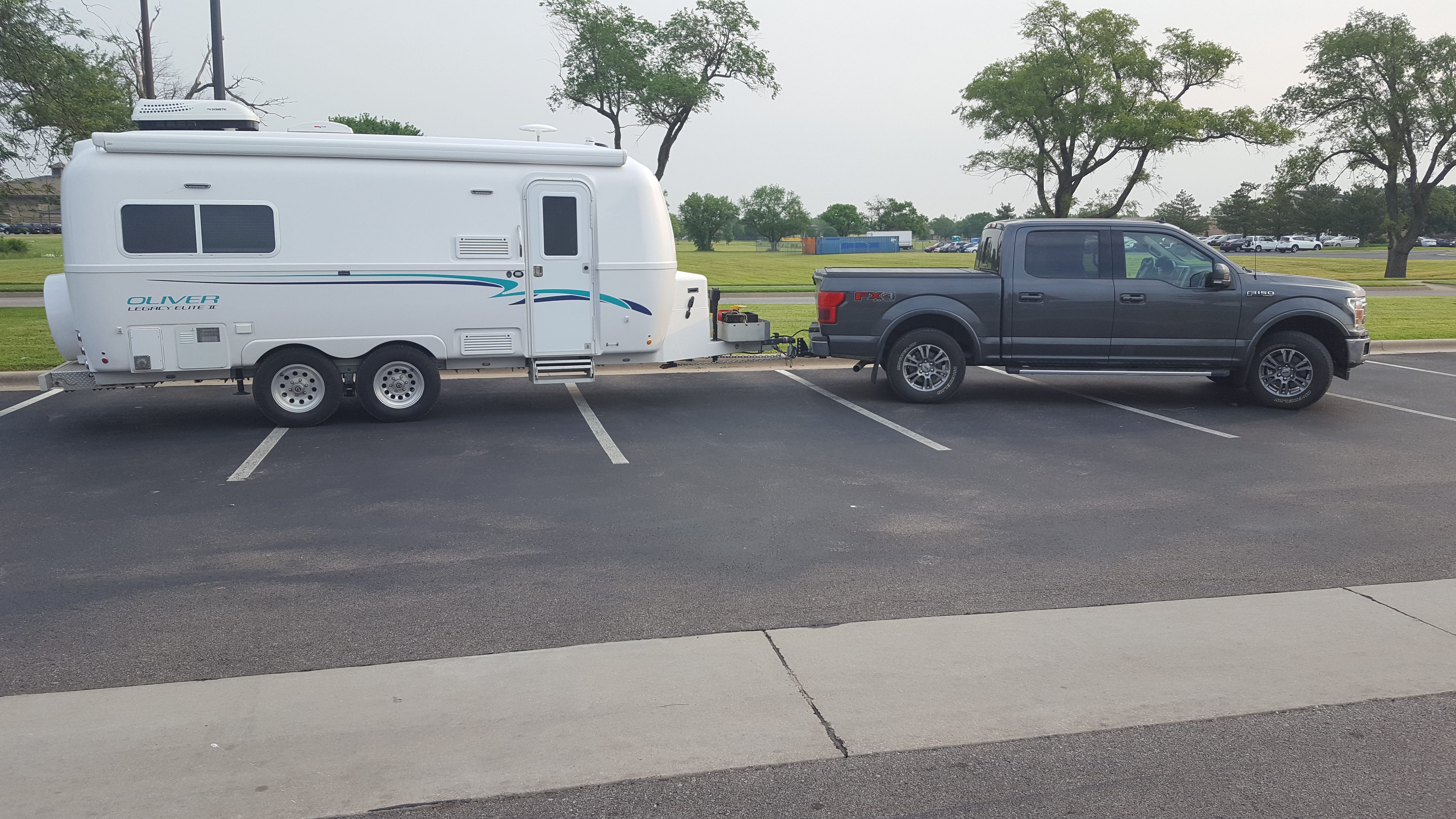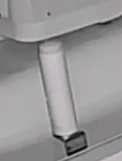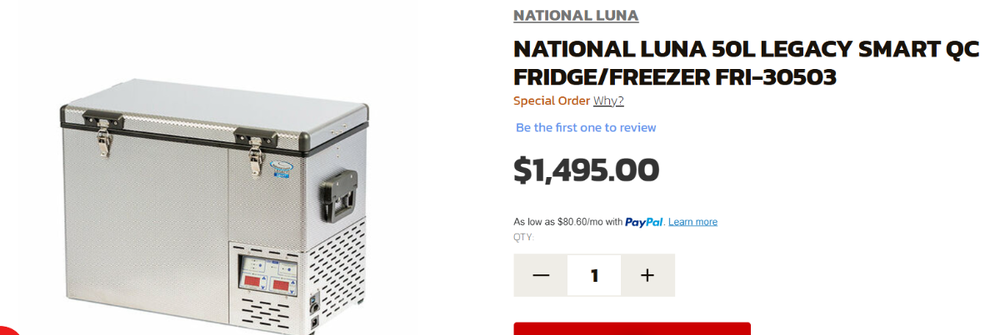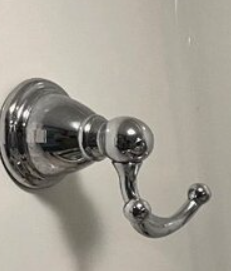-
Posts
2,012 -
Joined
-
Last visited
-
Days Won
53
Posts posted by Geronimo John
-
-
If it is still serviceable, I would put a new nut and rubber mount on it and roll on. Then replace it at my time of choosing.
GJ
-
 5
5
-
-
The Airstream skin used to be near bullet proof. Not so for some time now. I saw one a few years ago where 1/2" hail destroyed it. The owner said it was to be totaled. Only other option was to have it reskinned at $48K. That's when I chose to go with Olliver. MaxBurner saw six ollies take 1.5" hail at the mother ship with zero damage.
As far as I am concerned, push outs are a maintenance nightmare!
GJ
-
On 3/8/2025 at 7:59 PM, jd1923 said:
Lew wrote back that it's 916.83 for each axle.
John
What springs are they using on the axle upgrades? I hope it is not the Dexter 1750 rated ones.
GJ
PS: Had a great time at the Rally! Good to meet many of our forum users and a few new owners.
-
 2
2
-
-
12 hours ago, jd1923 said:
You could remove the bad side, simple enough by removing the two nuts you tried tightening earlier and pulling the jack out from above.
I believe one would also need to remove the jack foot plate from the unit to pull it out. Easy to remove the plate bolt from below the foot plate.
2 hours ago, jd1923 said:You’d think they would have a jig to hold the two parts at a consistent height.
True. OTT provides the bracket to Barker who welds it on to their standared jack. Point is that it may be a OOPS by either OTT or Barker. Or maybe both???
GJ
GJ
-
 2
2
-
-
That is strange. Time to submit a ticket on this one.
GJ
-
 4
4
-
-
See you at the Ralley!
-
34 minutes ago, Ty J said:
Thats my Cell phone booster. I can try to penetrate the gasket if I can find some capture device for the water.
Roger. Thanks.
-
On 3/19/2025 at 12:31 PM, jd1923 said:
Our hull sits outside, never in storage, and with solar it's always between 97-100% SOC,
JD:
SOME mfg, like Battle Born, specifically warn not to keep their batteries on charger at 100% for long durations. You may want to verify what your MFG says.
GJ
-
On 3/25/2025 at 5:48 PM, jd1923 said:
Is it a coincidence that @johnwen and I are the only two installations that grounded to frame vs. another 20 ft cable to reach the battery B- terminal? 🤣
And I "ASSUME" that you have run a #4 AWG all copper cable from the frame to the B- terminal as well.
I have to adopt a different set of charging parameters, and once done will check performance. If it does not improve, then I will likely try adding such cables to the anderson connection at the TV rear bumper and battery. Would certainly prove your hypothsis.
BTW: Assume is often spelled Ass of You and ME. LOL
-
 1
1
-
-
On 4/3/2025 at 5:48 AM, Teaney Hull 292 said:
Oh, any ideas on how to remove the duct tape residue from taping the solar panels to the roof? %^)
Crazy Horse said use gasoline. But I think rocket fuel would be more effective.
GJ
-
On 3/29/2025 at 10:48 PM, Ty J said:
Tosot A/C installed
Ty J: Is this a drain tube? If so it would be simple to penetrate the hull on both sides and pipe them down via the existing Dometic drain tube.
GJ

-
 1
1
-
-
Art is bringing my hydraulic crimper too the Rally. If you have the measurements (with a bit of slack of course), the right cables and lugs to fit THAT cable, I would be glad to mechanically crimp them for you. This cable size and lug ID issue has stumped some of the best of us, so I highly recommend buying them from the same vendor.
GJ
-
 1
1
-
-
On 3/19/2025 at 8:21 AM, johnwen said:
5-30a variation
Wow you are of of the VERY few that are actually seeing 30 amps from the 30 amp model.
I hope you will be at the rally so I can your setup. Good job.
GJ
-
 1
1
-
-
On 3/13/2025 at 10:28 AM, dewdev said:
I can winterwize with 2 gallons of Rv anti freeze
You are correct in that OTT video says two gallons as well. I use 2.5+ gallons. Just a matter of how long your stroke is! 🙂
GJ
-
 1
1
-
-
Flooded Lead Acid (FLA) starter batteries usually employ maintenance-free designs. But FLA deep cycle batteries require regular maintenance to each of their cells.
The plug you are showing typically serves as a vent path. They are not intended for service, but on many battery's they can be removed for adding DI as you suggested. The question is does this vent provide a pathway that DI will flow equally to all the individual cells?
Regardless, doing so can be very dangerous. A small droplet of sulfuric acid splashed out of the battery can easily blind and/or disfigure.
Personally IF it were mine, I would not even consider trying to refill these batteries. Just not worth the risk. Especially since they are 5 years old.
Bad news you need new batteries. Good news is you need new batteries, and it is a perfect time to upgrade to Lithium. See JD's and several other posts on DIY battery upgrades.
Good luck,
GJ
-
 6
6
-
-
Scott Oliver's design is amazingly effective in giving us a very safe towing trailer. Heavy, compact, non-swaying, a shape that reduces side loading of gusts, tandem axle, four shocks, EZ flex, the strongest frame of any trailer in this weight class, E-rated tires, and the Anderson Hitch transferring weight forward for those that need it and an extra long tongue. The amazing part is the design. Even more amazing is that it is Stock on all our trailers.
GJ
-
 1
1
-
 4
4
-
-
++++++++++++++++++++++++++++++++++++++++++
Actually IF I were Dometic, with all the really bad publicity they sadly have received about A/C units that owners have despised so much.... I would wait about 5 years before introducing a new one in the USA.
After that we all will have totally forgotten about our mutual bad experience and they will come out with an inverter unit with internal drainage, a fan selector switch tied to the AC Compressor run, and a remote T-stat/thermistor. In a lower profile unit using a brand new even more efficient refrigerant and sold at half the price of their competitors.
GJ
-
 2
2
-
 2
2
-
-
Another approach is to remove the old wash cloth bar assembly entirely. Here is a teaser about it. There is a full DIY that Art wrote up I beleive.
-
 2
2
-
-
On 4/8/2018 at 10:17 PM, Overland said:
Moen Brantford
Diane: Thank you for posting back. Frankly the cost is super reasonable.

-
-
Thank you Geoff. I will be adding three likely so it would not work well if they are not matching to the OEM. I do appreciate your suggestion. I do agree that the OEM ones are not the best for their intended purpose though. If the OEM ones are no longer available, I may just bite the bullet and replace them all to match. $$$ though....
GJ
-
Searching the forum for the source of our thru the wall coat hooks. Saw where an owner posted this before, but not finding it now.
Thanks
GJ

-
PLEASE correct me if I missed the spec: Both units will need a Mod for the fan running all the time when on (No fan off with compressor switch), for remoting the thermistor to a central of cabin location, and don't have a gravity drain feature like the ole hammer mill Dometic. I really hope that they didn't go down the same "rabbit hole" that Houghton did.
GJ
-
I really like the fact that these units have Inverter design compressors. For me, the Houghton's two Mods issue and not having the Inverter compressor edge: For sure would take the Houghton off my recommended list for sure.
The 45 Db on low speed may be correct. If so that's 2X WOW!








Gorilla compact 25’ hose for marine and RV use
in Mechanical & Technical Tips
Posted
Do these hoses "shrink up" a bunch when not under pressure or just go flat?
When storing do you need to twist them when coiling around your arm or placement into a bucket/box?
Tried to find a video of them was was not successful.
GJ